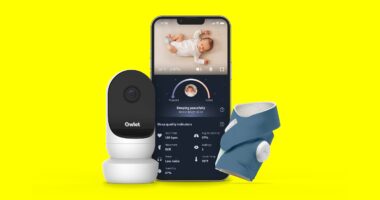
Online grocery ordering platform Instacart wants to continue its pandemic run. To do that, it needs to physically move into more stores.
On Tuesday, Instacart said it was buying Caper AI, a maker of artificial-intelligence-powered shopping cart and checkout technology. The $350 million deal is Instacart’s largest, underscoring the central role in-store grocery shopping will continue to have in the industry, even despite the growth in online delivery platforms.
Instacart says the acquisition will allow it to offer smart checkout counters to retailers that can automatically detect items placed on them. The company says it can provide retailers with a “plug and play” cart solution that can recognize items, so customers no longer have to weigh or scan them. Instacart says customers can even check out right at the cart.
There is no doubt the pandemic was a boon for Instacart. At a technology conference hosted by The Wall Street Journal on Tuesday, the company’s new Chief Executive Fidji Simo, former head of Facebook’s legacy Blue app, said Instacart’s transaction value has multiplied since the beginning of 2020. Data from Bloomberg Second Measure show Instacart’s monthly year-over-year growth in terms of consumer sales peaked in April 2020 at 433%.
But that is a tough act for any business, no matter how hot, to follow. This year, growth has slowed: Over the past six months, Instacart’s monthly consumer sales have actually fallen an average of more than 7.5% versus last year, Bloomberg Second Measure data show.
In North America, groceries are a $1 trillion industry with roughly 10% of purchases coming online, according to Baird analyst Colin Sebastian. Instacart believes online penetration can grow to 30% over the next five to 10 years, Ms. Simo said Tuesday.
But grocers have voiced concerns about Instacart’s model, with many saying they aren’t making money on the platform because of the high commissions Instacart charges. Others complain that the platform owns too much control over interactions with their customers. It would therefore serve Instacart well to become more of a full-fledged, omnichannel partner to grocery stores, something the Caper AI deal helps it accomplish.
Instacart also has said it expects to pursue a public offering. While Ms. Simo declined to comment on timing around that offering on Tuesday, bolstering growth metrics in advance will be key. This gives Instacart a strong incentive to play where 90% of grocery sales are still taking place: in stores.
To compete with the likes of Amazon.com’s AMZN -0.38% Whole Foods, Instacart has to offer solutions that will offer broad appeal. Already, the company has been strengthening its advertising business, which, among other things, helps brands to reach consumers at the point of sale. That has apparently been attractive: Instacart’s advertising business is growing by triple digits year over year, according to Ms. Simo.
A more diversified business model will no doubt help Instacart better position itself for an eventual public listing. At $350 million, Instacart is putting some rather expensive eggs into Caper AI’s smart basket, but at least it isn’t betting the whole farm on basic grocery delivery.
Write to Laura Forman at [email protected]
Copyright ©2021 Dow Jones & Company, Inc. All Rights Reserved. 87990cbe856818d5eddac44c7b1cdeb8








